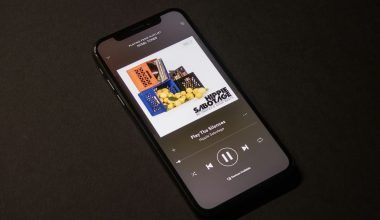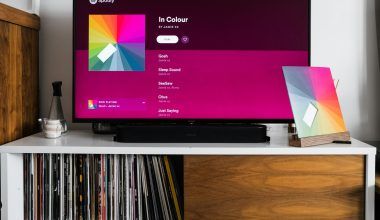Spanish songs are loved all over the world. They make us smile, cry, dance, and even fall in love. But what makes these songs so unique? Is it their lively beats or emotional lyrics? The truth is, it’s everything combined—the culture, language, and passion behind every note.
Spanish songs come in many styles, from traditional flamenco to modern reggaeton. This variety means there’s something for everyone, no matter your taste in music. So, whether you’re looking for a song to cheer you up, relax, or dance your heart out, Spanish music has got you covered.
A Journey Through the History of Spanish Songs
Let’s take a quick trip back in time to see how Spanish songs have evolved.
- Flamenco Beginnings
Flamenco music started in southern Spain and was influenced by gypsies, Arabs, and Jews. With its emotional singing and dramatic guitar, it’s one of the oldest and most iconic Spanish music styles. - The Golden Age of Boleros
Romantic ballads known as boleros became popular across Spain and Latin America. These songs are all about love and heartbreak, making them perfect for slow dances and dreamy nights. - The Rise of Latin Pop and Reggaeton
In the 2000s, artists like Shakira and Enrique Iglesias brought Latin pop into the global spotlight. Later, reggaeton stars like Daddy Yankee and Bad Bunny made us all dance with their catchy beats.
Why Spanish Songs Are Loved Worldwide
Ever wondered why Spanish songs are so popular? Here are a few reasons:
- They’re Fun and Energetic: Many Spanish songs, especially reggaeton, make you want to move your feet.
- They Speak the Language of Love: Spanish is a romantic language, and its music captures emotions beautifully.
- They Unite Cultures: Spanish music blends styles from Africa, the Caribbean, and Europe, creating a universal appeal.
When you listen to Spanish songs, you feel like you’re part of something bigger—a global celebration of music and life.
Exploring Different Types of Spanish Songs
1. Flamenco: A Soulful Tradition
Flamenco is full of passion. It’s not just music; it’s a way of expressing deep emotions. The guitar strums, the singer’s voice, and the dancer’s movements all tell a story.
- Listen to This: “Entre Dos Aguas” by Paco de Lucía.
2. Reggaeton: Dance Till You Drop
If you love upbeat music, reggaeton is for you. With its infectious beats, it’s perfect for parties and workouts.
- Popular Song: “Gasolina” by Daddy Yankee.
3. Latin Pop: Sweet and Catchy
Latin pop is where Spanish music meets global trends. Think of it as pop music with a spicy twist.
- Must-Hear: “Hero” by Enrique Iglesias.
4. Salsa and Bachata: Romantic and Lively
These genres are ideal for dancing. Salsa is energetic, while bachata is smoother and more intimate.
- Try This: “Obsesión” by Aventura.
Top 10 Spanish Songs You Must Hear
Here’s a list of must-listen Spanish songs:
- Despacito – Luis Fonsi ft. Daddy Yankee
- Bailando – Enrique Iglesias
- Mi Gente – J Balvin
- Hips Don’t Lie – Shakira
- Con Altura – Rosalía
- Tusa – Karol G
- La Cumparsita – Carlos Gardel
- Gasolina – Daddy Yankee
- Livin’ la Vida Loca – Ricky Martin
- Vivir Mi Vida – Marc Anthony
These songs show the wide range of Spanish music, from romantic tunes to dance-floor hits.
Famous Spanish Music Artists
Spanish-speaking artists have ruled the music world for decades. Let’s meet some of the legends:
1. Shakira
With her unique voice and belly dancing, Shakira is a global icon. She mixes traditional Colombian music with modern pop and rock.
2. Enrique Iglesias
Known as the King of Latin Pop, Enrique has given us countless romantic ballads and club hits.
3. Rosalía
Rosalía blends flamenco with electronic and urban music, creating a style that’s fresh and bold.
4. Bad Bunny
This reggaeton star has broken records and stereotypes, making Spanish music more popular than ever.
Learning Spanish Through Songs
Did you know that listening to Spanish songs can help you learn the language? It’s true! Music makes learning fun and easy. Here’s how you can do it:
- Start Small: Begin with simple songs like “La Bamba.”
- Follow the Lyrics: Apps like Spotify and YouTube often show lyrics so you can sing along.
- Practice Daily: Listen to at least one Spanish song every day to improve your vocabulary and pronunciation.
Spanish Music for Every Mood
Feeling sad? Play a Spanish ballad. Need motivation? Try a reggaeton hit. Spanish music has something for every mood. Here’s what you can listen to:
- Love: “Bésame Mucho”
- For Dancing: “Bailando”
- For Relaxing: “Mediterráneo” by Joan Manuel Serrat
Spanish Music Festivals
Want to experience Spanish songs live? Visit these amazing festivals:
- Primavera Sound: A mix of Spanish and international artists.
- Flamenco Biennale: A must-see for flamenco lovers.
- Sonar Festival: Combines electronic beats with Spanish vibes.
These festivals are a great way to connect with music and culture.
Spanish Songs and Dance: A Perfect Pair
Spanish music and dance go hand-in-hand. From flamenco’s dramatic steps to salsa’s smooth moves, dancing is how many people celebrate the joy of Spanish songs.
Famous Dance Styles:
- Flamenco: Passionate and dramatic.
- Salsa: Perfect for energetic dancing.
- Bachata: Romantic and smooth.
Where to Find Spanish Songs
Thanks to streaming platforms, you can find Spanish songs with just a click. Here are some tips:
- Use Spotify’s playlists like “Viva Latino.”
- Check out YouTube channels featuring Spanish hits.
- Try apps like Deezer or Pandora for curated Spanish music.
Final Thoughts: Why You Should Listen to Spanish Songs
Spanish songs are more than just music—they’re a way to feel alive. They bring people together, tell stories, and create unforgettable memories. Whether you’re a fan of upbeat reggaeton or soulful flamenco, there’s something magical about Spanish music.
So grab your headphones, turn up the volume, and let take you on a journey of love, dance, and joy!
Related Articles:
For further reading, explore these related articles:
- Famous Marathi Songs – A Melodic Treasure of Maharashtra
- Unique Gifts for Music Lovers: Simple and Thoughtful Ideas to Surprise Them
For additional resources on music marketing and distribution, visit Deliver My Tune.






